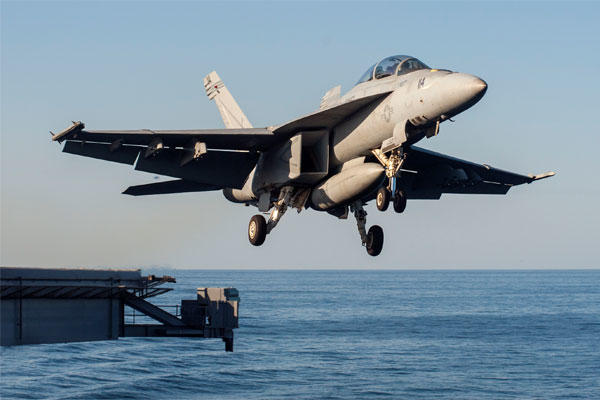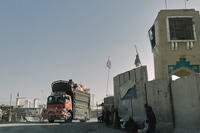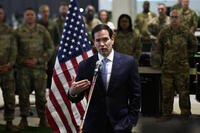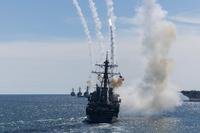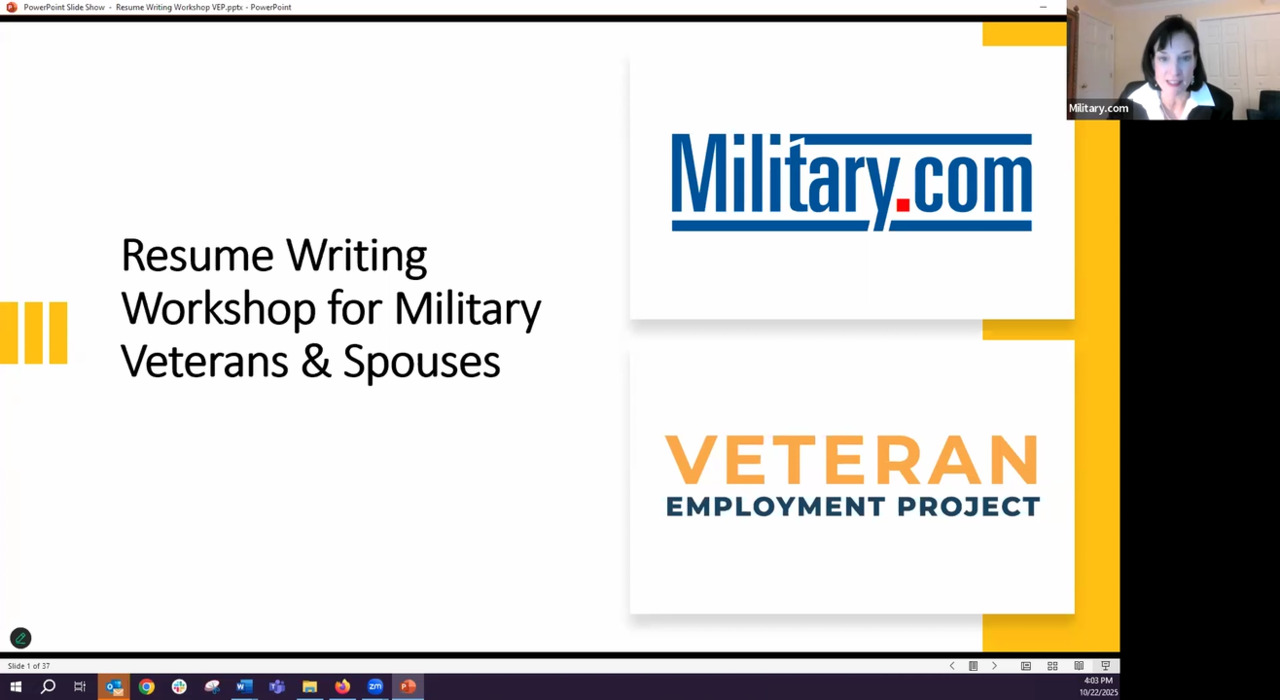The Navy is preparing for its first at-sea test of a new software program for F-18s designed to make it easier for the multi-role fighters to land on carriers.
"We're going to take it to the ship this month," Rear Adm. Michael Manazir, Director of Air Warfare, told Military.com in an interview.
The Navy will test the automated landing software system at sea following a string of recent successful land-based tests at Naval Air Systems Command, Patuxent River, Md.
The software is called Magic Carpet, an acronym for Maritime Augmented Guidance with Integrated Controls for Carrier Approach and Recovery Precision Enabling Technologies.
The technology is slated to deploy by 2019 on F/A-18E/F Super Hornets and E/A-18G Growler electronic jamming aircraft.
It is designed to make landing on an aircraft carrier easier by maintaining a commanded glideslope and angle of attack, giving the pilot the opportunity to focus more attention on maintaining a proper line-up, a Navy statement said.
"A pilot can take symbology on the HUD (heads up display) and he can move it to a symbol or a place on the flight deck and let go of the controls. The airplane knows with that symbol that is where I want to land. It will continually land on that spot," Manazir explained.
Related Video
The software helps the approaching aircraft lock in on the correct landing approach, removing the need for the pilot to continuously adjust the aircraft. Landing on a carrier requires the pilot to account for the aircraft's speed, the speed of the ship along with wind and weather considerations. Pilots seek to maintain the proper glide slope as they approach the carrier deck.
"When we land an aircraft on an aircraft carrier, it is kind of a three connection thing. You see the deviation, you correct, you re-correct and then you correct one more time as you go so there you are kind of chasing the parameters," Manazir said.
"With magic carpet, the pilot can move the stick and move reference point and the stick does not have to re-correct. That is where the airplane is going to go. It is control law software – and it actually moves the flight control surfaces to make that work -- to where the aircraft is going to go. It is not just symbology," Manazir said.
Navy test pilot Lt. Brent Robinson said the recent land-based flight and landing of Magic Carpet showed the technology could perform as was demonstrated in simulations.
"With the initial set of flights, we were able to confirm that these new flight control laws performed very much in line with our predictions from the simulators," said Robinson, a Magic Carpet project officer. "The initial airborne response characteristics observed in both Path and Rate modes with both Full and Half flaps are very encouraging."
The flight control algorithms for Magic Carpet were developed by Naval Air Systems Command and the Office of Naval Research.
If Magic Carpet becomes widely used throughout the Navy and emerges as a new standard for landing aircraft on carriers, pilots could then use more of their valuable training time working on weapons systems and other key avionics issues instead of practicing as much on how to land the plane on a carrier, Navy officials said.
-- Kris Osborn can be reached at kris.osborn@military.com
